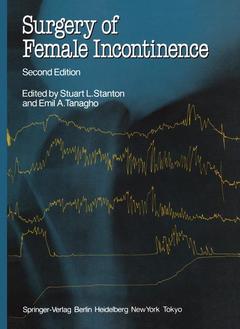In this book we have expert urologists and gynaecologists on the two sides of the Atlantic working together with a common interest, the inadequate female urethra. What makes this volume so valuable is that it is not restricted to one speciality or one cult, but bravely (and systematically) presents established principles and practice. Not only is the current knowledge of the anatomy and function of the continence mech anisms defined by experts carefully selected by the two authorities in the field, but this infor mation is directly applied to clinical problems for the reader to use in the care of patients. Because the basics are presented first, and followed by the methods of diagnosis, the sec tions describing each form of treatment, whether medical or surgical, are set on rational bases. These are not cookbook directions. This background is especially valuable because the incontinent female usually has a complicated disorder, each case being different, so that the responsible gynaecologists or urologists must apply as much understanding as technique if their efforts are to achieve dryness. The clear descriptions and illustrations in this book, then, act as guides as much as directives. This second edition builds on the success of the first. All of us trying to help these unfortu nate women will do more for them from having this new edition at hand.




